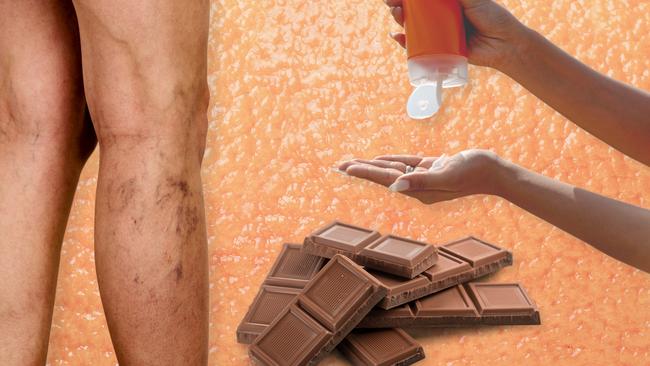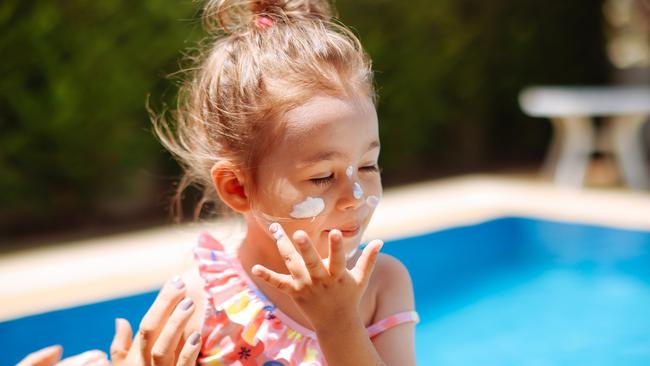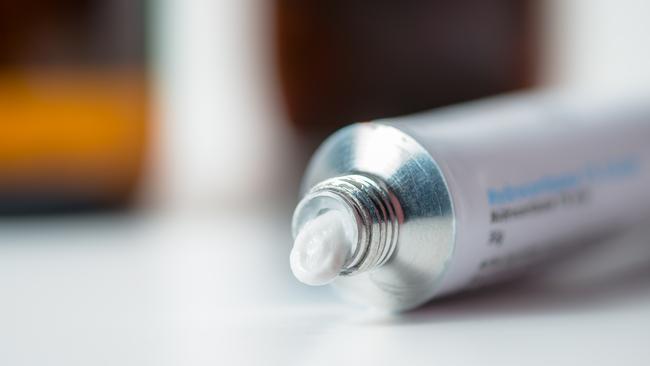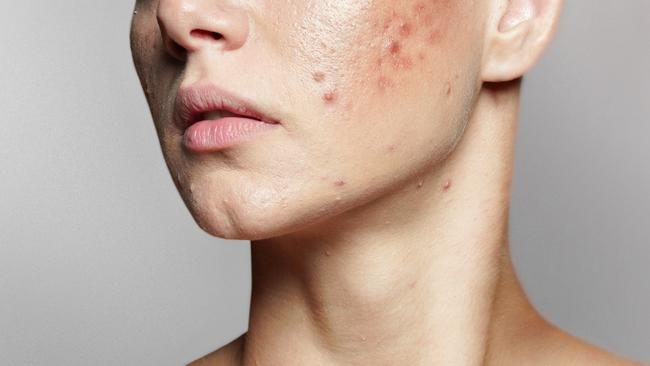Varicose veins, shaving and acne: a dermatologist busts some myths
Shaving makes hair grow back thicker. Steroid creams will thin the skin. You should stop drinking milk to prevent acne. Only one of these is close to the whole truth.

It’s astonishing how many people have a little bit of knowledge about their skin that turns out to be absolutely wrong or at least has strayed from the truth.
Here are some common skin myths and what you should know about them.
13 skin myths
1. Skin damage is done in childhood
There is a false belief that all the damage to your skin is done in childhood and there’s no point as an adult doing anything to protect your skin because it’s all too late. That is absolutely not true. Every extra bit of sun exposure without protection, every extra sunburn, is contributing to further DNA damage. This increases the risk of cells that are partially damaged going on to become precancerous cells such as actinic keratosis or sunspots, or for the actinic keratoses to be transformed into squamous cell cancers. Other cells may become basal cell cancers; moles can become abnormal or transform into melanoma.
So it is never too late to improve your sun behaviour and slip, slop, slap, seek and slide – and model that good behaviour for your children, your loved ones and the people around you.

2. Clouds and window glass protect you from the sun
It’s a myth that you can’t get burnt on cloudy days or that window glass stops the transmission of harmful rays. There is still 80 per cent UV transmission on cloudy days, while window glass blocks UVB rays but not UVA.
For many years it was thought UVA played no role in skin cancer and that it was just a long-range wavelength of UV light that contributed to pigmentation, including so-called liver spots and brown marks. However, we now know that’s not the case and UVA does contribute to melanoma and other skin cancers. So cover up and take some precautions even on cloudy days or if you are near a window, driving or enjoying the view.
3. Chocolate causes pimples
There is a smidgen of truth in this. We know a diet high in milk – more than a couple of glasses of dairy or dairy equivalent a day – can stimulate acne because of its effect on insulin-like growth factor one (IGF-1).
But a little bit of chocolate does not really contribute significantly to acne, nor does diet play that much of a role. There is some evidence to show a high glycaemic-index diet – a diet that’s high in all the white carbohydrates and rapidly processed carbohydrates – also can increase IGF-1, which can drive acne. Similarly, greasy food doesn’t cause oily skin but if you’re eating fried white carbs that can make acne worse.
4. Steroid creams always thin the skin
If steroids are used inappropriately on diseased skin they can cause the skin to become thinner. But if steroids are used appropriately, at the correct strength, in the appropriate area, for the right amount of time, then there is no evidence to show they thin the skin.
In fact, those who try to reduce the amount of steroids they use may end up using more steroids across time because they do not treat early enough, for long enough, or with the appropriate strength of steroids. So get your advice about these from your family doctor or from a dermatologist.

5. Nano particles in sunscreen enter your skin
There is no evidence that nano particles in sunscreen can penetrate a normal healthy skin barrier. Studies have shown despite the concern about this they do not penetrate the intact skin barrier into the living epidermis (the upper layer of the skin). Where this concern came from was that if sunscreen containing nano-sized zinc or titanium was used on diseased skin – where the skin barrier was not intact because of a rash, eczema or psoriasis, for example – then there was a very limited degree of penetration. On balance, however, what we do know is that if sunscreen is not used, then harmful UV rays can and will cause skin cancer in individuals, especially in countries such as ours with a very high UV index and outdoor lifestyle. Studies have shown regular sunscreen use, particularly during the formative years, can reduce melanoma risk by 40 per cent (2018 study from the University of Sydney, Cancer Council Queensland and the University of Melbourne).
6. Acne is only for teenagers
This is absolutely not the case. We do see acne more in adolescents and pre-adolescents but post-adolescent acne, particularly in women, is a very big part of the patient population I see.
I say predominantly women because acne is very much hormonally driven and often can flare premenstrually with a surge in the female hormones oestrogen and progesterone, with ovulation. So acne is definitely not only for teenagers.

7. Crossing your legs causes varicose veins
There is no evidence to show that crossing your legs causes varicose veins. Typically, there can be a family history of varicose veins, and they are often exacerbated in people who stand a lot. They can become worse in pregnancy because of the increased intravascular pressure of the uterus retarding venous return – return of the blood – back up from the veins towards the heart. There are other risk factors for varicose veins including obesity and prior injury to the legs.
8. Darker-skinned people don’t need sunscreen
Dermatologists refer to skin phototypes and each type is numbered. Skin phototypes five and six are African-American or African and some Southeast Asians. Skin cancer is certainly rarer in these phototypes but those with darker skins can help to prevent photo-ageing – pigmentation, wrinkling and so on – by using sunscreen. These skin types do still have a risk of melanoma but have far fewer non-melanoma skin cancers, such as basal cell cancers and squamous cell cancers.
Skin types three and four, which are more Mediterranean skin types, often still get skin cancers and do need regular skin cancer checks and to use high sun-protection factor sunscreen. However they do tend to get non-melanoma skin cancers a little bit later than those with fairer skin. Skin types three and four might experience common skin cancers in their 50s, 60s and 70s, whereas fair-skinned people experience them in their 30s, 40s and 50s.

9. Shaving makes your hair grow back thicker
Shaving is the form of hair removal that causes the least stimulation of hair growth. When you pluck hair or pull the hair out, it causes low-level stimulation of hair growth. Waxing is the same, whereas shaving or using a depilatory cream does not stimulate hair growth or cause the hair to grow back thicker. Hair removal laser, when performed appropriately by appropriately trained staff using correct doses and an appropriate device, should mean permanent hair removal or reduction with only three to six treatments. This is the best option for hair reduction.
10. You should exfoliate daily for glowing skin
Our skin exfoliates naturally every 28 days. The upper layer of skin, the epidermis, is composed mainly of the cell type keratinocytes. The top layer is called the stratum corneum and it sloughs off naturally every 28 days, so you don’t need to help it a lot. In fact, as a dermatologist I see many issues from inappropriate exfoliation, ranging from irritation and rashes to bacterial, fungal and yeast infection and folliculitis.
11. Laser treatments are only for light skins
Lasers and other energy-based devices such as intense pulsed light and broadband light have developed in leaps and bounds. It’s an area of intense research and there are now many treatments that are safer for darker-skinned people, people with skin phototypes three through to six. However, as I always say to my patients, the first step is diagnosis and assessment. So being assessed by a dermatologist or a plastic surgeon or their specialist staff is key to identifying the concern and then targeting the best way to treat it.
12. Organic is safer
Another myth about skincare is that natural and organic products are always safer for your skin. That’s not the case at all. It really depends on the individual product. Australia has a very good and active Therapeutic Goods Administration that exists to protect the consumer, and if a product contains an active ingredient in high concentration and has a strong biological effect it often can be stocked only by a medical practitioner. It does not mean that the medical practitioner has made this product. If something is stronger again, then it will be on a prescription.
13. Tan lines are trending on TikTok
Really? Do I need to say more?!
And ditto for the 10-step Korean beauty routines. If you put 10 layers of products on your skin none of them will work as they won’t penetrate. One to two serums and a cream is about the maximum that should be applied in one sitting.
Ritu Gupta, MBBS (hons), PhD, FACD, is a medical and cosmetic dermatologist. Visit on Instagram: @dr_ritu_dermatologist
This column is published for information purposes only. It is not intended to be used as medical advice and should not be relied on as a substitute for independent professional advice about your personal health or a medical condition from your doctor or other qualified health professional.




To join the conversation, please log in. Don't have an account? Register
Join the conversation, you are commenting as Logout